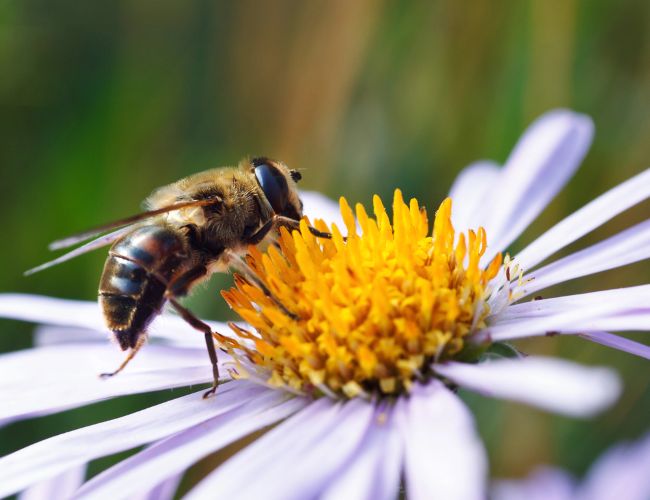Creating a pollinator-friendly garden

You don’t need us to tell you how important pollinators such as bees, butterflies and hoverflies are in the garden. They’re vital to the health of our ecosystems and the key to the success of the many plants that we grow. Sadly, however, pollinator populations are on the decline due to habitat loss and pesticide use. Therefore, our gardens have never played a more important role in helping them thrive.
The good news is that creating a pollinator-friendly space is simpler than you might think. With the right mix of plants, thoughtful garden design and a few practical changes, your garden can become a haven for wildlife.
Choose the right plants
Of course, the first thing to do when creating a pollinator-friendly garden is to choose the right plants to attract and sustain these bugs and insects. There are many options to choose from, but as a basic approach, here are a few fail-safes for each season:
- Spring – crocus, lungwort and primrose
- Summer – lavender, foxglove, verbena and echinacea
- Autumn – sedum, ivy and aster
It’s important to plant throughout the seasons when creating a pollinator-friendly garden, as this ensures food year-round.
It’s also important to stick to native UK plants as these are especially valuable to native pollinators. Think hawthorn, honeysuckle and wild marjoram. You could consider creating a small wildflower patch or meadow corner as a low-maintenance option.
Avoid pesticides
Chemicals, even organic ones, can harm pollinators. Think about natural alternatives for pest control so that you avoid nasty pesticides. Neem oil is a natural, plant-based pesticide derived from the neem tree and is widely used in organic gardening to control pests such as aphids, whiteflies and spider mites. Because it disrupts insect life cycles rather than killing on contact, it’s safer for insects such as bees when used carefully. Apply in the early morning or late evening, avoiding direct contact with flowers.
Above all, create a balanced garden that supports predators like ladybirds and birds to catch those pesky pests in the way that nature intended!
Provide shelter
Of course, a key way to create a pollinator-friendly garden is to accommodate the pollinators! This could include creating a bee hotel, log piles, stone stacks and undisturbed soil for ground-nesting bees.
To create a bee hotel, bundle together hollow stems and drill holes of various sizes (2-10mm) into a block of untreated wood around 10-15cm deep. Place the hotel in a warm, sunny spot that’s ideally south-facing and sheltered from rain. Avoid treated wood and ensure that the holes are smooth to prevent injury to bees. Regularly clean or replace the materials each year to reduce the risk of parasites and disease.
Provide water sources
Pollinators such as bees and butterflies also need shallow and accessible water sources, particularly in dry spells in spring and summer, so consider adding a dish of water with pebbles or floating corks for safe landing. Top this up regularly in warm weather to keep it full and cool, and change the water every few days to keep it clean and free of bugs.
Creating a pollinator-friendly garden doesn’t require a complete overhaul. A few thoughtful choices can be enough to make your space more inviting to bees, butterflies and other beneficial insects. Whether you’re working with a few pots on a balcony or a full-scale plot, every little effort counts. Head to your local country supplies store for any tools you need to get started, and happy pollinator spotting!


